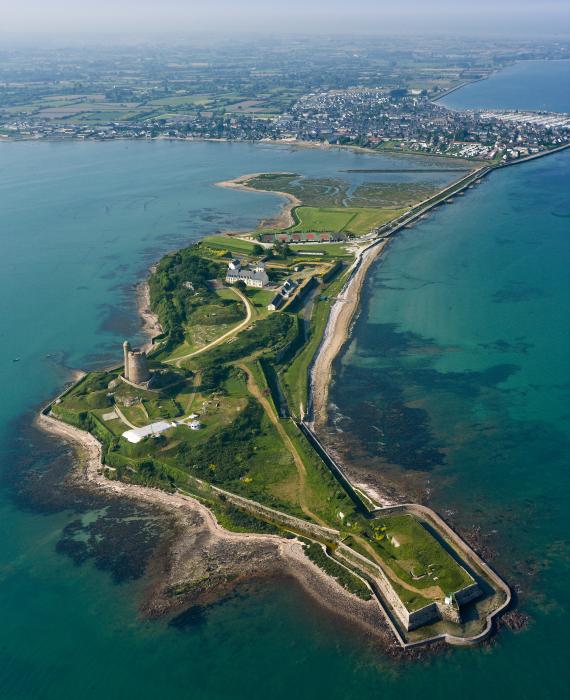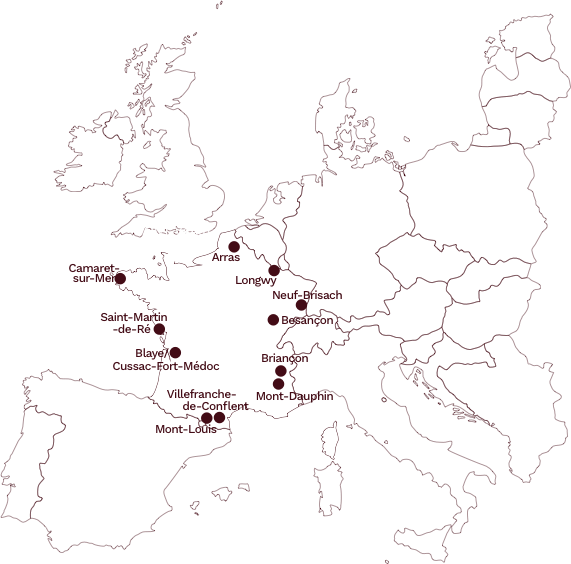Journées européennes du patrimoine
Les 20 & 21 septembre 2025, les douze Fortifications de Vauban inscrites sur la Liste du patrimoine mondial de l'UNESCO vous proposent de nombreux évènements. Découvrez-les vite !

During each of his visits, Vauban described the harbour of Saint-Vaast as the "best and most secure in the kingdom" with natural protection from the Isle of Tatihou.

However, the Cotentin coast remained vulnerable because of its prominent position facing England. The need to protect it turned out to be crucial after the battle of the Hougue, in June 1692, when Louis XIV‘s ships were defeated by the Anglo-Dutch fleet. Therefore, in 1694, Vauban called for the urgent construction of two towers which would protect the anchorage of ships by means of cross fire.
Work started under the orders of the engineer de Combes. These tapered towers, 20 metres high, are distinguished by their many different functions: for observation, firing out to sea and communication by signals and are a fine example of Vauban’s military engineering. They were planned to be self-sufficient, with cisterns and magazines, to enable between 40 and 80 men to withstand a siege.
Up until the Second World War, these towers were integrated into different fortified ensembles on this coast. Today, the Isle of Tatihou is an environmental showcase, managed by the Manche General Council and houses a maritime museum. The Hougue tower has been open to the public since 2008; the signal station remains a national Marine property.
Les 20 & 21 septembre 2025, les douze Fortifications de Vauban inscrites sur la Liste du patrimoine mondial de l'UNESCO vous proposent de nombreux évènements. Découvrez-les vite !
On July 7th 2023, 15 years to the day after the Fortifications of Vauban were inscribed on UNESCO's World Heritage List, the twelve major Vauban sites proudly celebrated this anniversary in ceremonies...
The year 2023 marks the 15th anniversary of the inscription of Vauban's Fortifications on the UNESCO World Heritage List. This is an opportunity to celebrate World Heritage and Vauban's work of genius...
Office de tourisme de Saint-Vaast-la-Hougue
1, place du Général de Gaulle
50550 Saint-Vaast-la-Hougue
Phone number: +33 2 33 71 99 71
https://www.encotentin.fr/saint-vaast-la-hougue
Ile Tatihou – Musée maritime
B.P 3
Saint-Vaast-la-Hougue
Phone number: +33 2 14 29 03 30
https://tatihou.manche.fr/
Visit of the island Tatihou
Free access on foot at low tide or by amphibious boat at high and low tide.
Visit of the Hougue tower
In June: every weekend and public holidays
In July, August and September: every day (except Monday and Tuesday) from 1.30 to 6.30 pm
Guided tours on reservation.